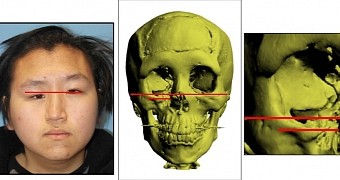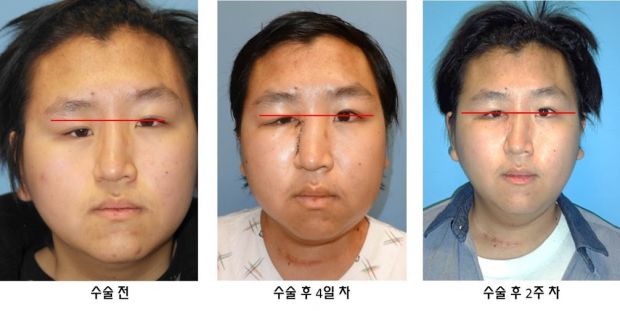So far, when it came to health-related achievements produced through additive manufacturing, we mostly had bone replacements or related breakthroughs to talk about. The latest example is quite similar.
Many of the 3D printed implants, bone grafts and joint replacements revealed in the past, and which were made by means of 3D printing, were meant to help people recover from injuries.
However, the effects of cancerous tumors have been steadily mitigated as well. 3D printing hasn't really put a dent in the issue of cancer, but it's definitely getting there.
Case in point, South Korean scientists have started to use 3D printing technology in their surgeries as well.
The realignment of a pair of eyes
A certain young man suffered from a tumor until ten years ago, when it was removed. However, his life hasn't been perfect since then, because the surgery left his face disfigured.
More precisely, it left his eyes completely out of alignment. You can imagine what that meant for his depth perception, let alone his charisma, such as it was.
Now, though, his eyes have been mostly set back to their proper, horizontal alignment, and there's almost no evidence that he ever had problems at all.
Professor Dong-Woo Cho of the Department of Mechanical Engineering at POSTECH; Professor Jong Won Rhie of the Department of Plastic Surgery, College of Medicine, at the Catholic University of Korea; and Won-Soo Yun of T&R Biofab Company are credited with this achievement.
They normally would have had to take out one of the patient's ribs and sculpt it into a replacement face bone, but a 3D printed alternative made that unnecessary.
Also, the implant was made from materials that will gradually be absorbed by the body (biodegradable polymer), even as real bone grows in its place.
How the surgery was planned and carried out
The medics used the left side of the face as a model for the damaged right side and asked FusionTech Company to design the 3D printed model (3D printed by systems certified by Good Manufacturing Practice).
They used the model to develop the implant, which they later inserted into the patient's face as intended. After that, he barely needed any recovery time.
After this, you can be sure that many other surgeons will at least consider the possible benefits of 3D printing technology. Not just in South Korea but all over the world, especially the USA and Australia from what we've seen.

 14 DAY TRIAL //
14 DAY TRIAL // 

